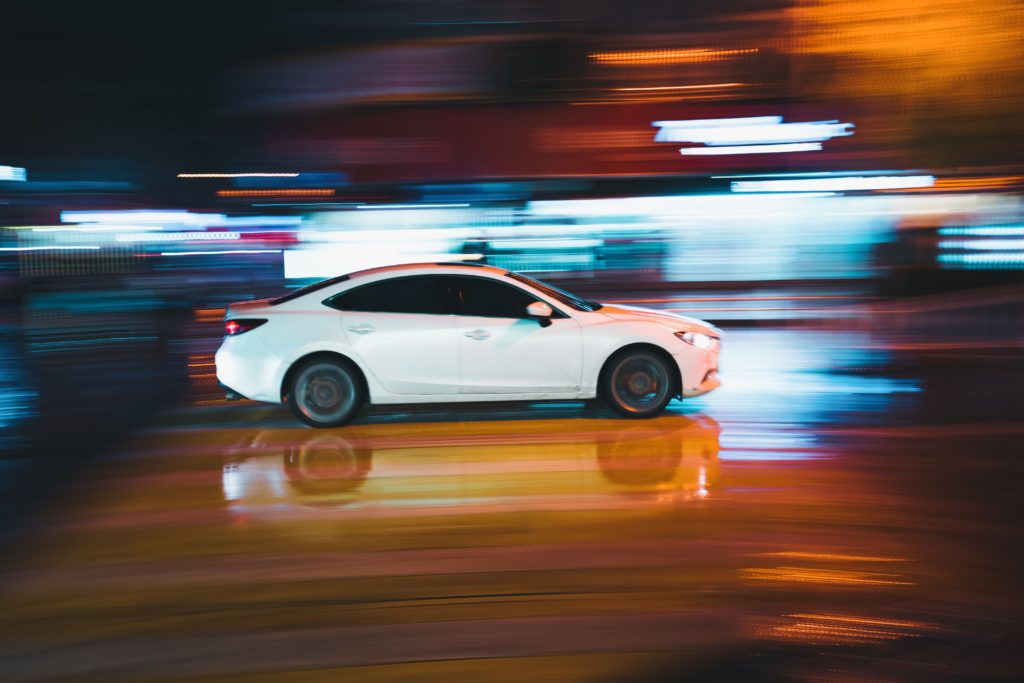An Event Data Recorder (“EDR”) is a device installed in commercial vehicles, light passenger cars, light trucks, and vans that captures information related to crashes. Sometimes mistakenly referred to as “Black Boxes,” the United States Department of Transportation National Highway Traffic Safety Administration (“NHTSA”) uses the term “EDR” to refer to data recording devices that are installed on vehicles. “Black Boxes” refer to the more sophisticated devices found on airplanes, trains and ships.[1]
Although manufacturers are not required to install EDRs in light passenger vehicles, many manufacturers choose to do so[2] because the devices collect real-world data to better define auto safety problems and to understand the specific aspects of a crash. It is estimated that about 64 percent of the 2005 model year passenger vehicles have some EDR capability. In 2014, it was estimated that 96 percent of all new cars sold in the United States were equipped with an EDR.[3] Currently, NHTSA is considering whether to make EDRs mandatory in all new cars, light trucks and SUVs.

What EDRs Can Tell Us
EDRs can provide a wide variety of data points, including speed, braking, steering, acceleration, seatbelt use, and, in the event of a crash, force of impact and whether or not the airbags were deployed. Most EDRs record data in a continuous loop, writing over information again and again until a vehicle is involved in a crash. Then, EDRs automatically save up to 5 seconds of data from immediately before, during and after an incident.
Determining Whether Your Vehicle Has an EDR
Starting in 2005, most vehicle manufacturers placed a statement in the owner’s manual stating whether the vehicle has an EDR. At the national level, beginning with 2011 model year vehicles, manufacturers are required to state whether the vehicle has an EDR in the owner’s manual. Virginia has required automobile manufacturers to disclose the existence of EDRs in the owner’s manual since 2008.[4] Click here for a list of vehicles with accessible data.
Getting EDR Data
EDR data cannot be extracted or interpreted without an expert. Extracting the data after an accident involves using special data-retrieval tool kits that consist of hardware, software and a cable that plugs into the vehicle’s onboard diagnostics port. Crash data retrieval tool kits can be expensive (running $2,000 – $10,000 or more).
In Virginia, investigators from the Virginia Crash Reconstruction Team, a special team within the State Police, have the ability to access and extract EDR data.
Privacy Concerns
Civil liberty and privacy groups have raised concerns about the implications of EDRs spying on car users, particularly as the issue of who owns the data has not yet been fully resolved. There has also been some controversy over the use of recorded data as evidence in court cases and for insurance claims against the driver of a crashed vehicle. Seventeen states including Virginia have enacted legislation regarding access to and the ownership of EDR data.
In Virginia, EDR data can be retrieved under the following conditions:[5]
- with owner’s consent;
- with a court order;
- for the purpose of diagnosing, servicing, or repairing the vehicle;
- for the dispatch of emergency medical personnel; or
- where there is probable cause of an offense.
The National Council of State Legislatures maintains an updated list of state EDR laws.[6]
The federal government has enacted legislation regarding access to EDR data, as well. The Driver Privacy Act of 2015, which was enacted on December 4, 2015, states that the owner or lessee of a motor vehicle is the owner of the data collected by the EDR. In order to access that data, an investigator would need to:
- be authorized by a court or judicial or administrative authority, subject to the standards for admission into evidence;
- obtain the written, electronic or recorded audio consent of the vehicle owner or lessee;
- be conducting an investigation or inspection authorized by federal law;
- demonstrate that the data is necessary to facilitate medical care in response to a car accident; or
- be conducting traffic safety research, so long as the personal information of the owner/lessee is not disclosed.
How is EDR Data Used?
Today, EDRs are becoming more and more of a factor in determining who or what was at fault during an accident. Recent cases using EDR data include:
- In Chavis v. Commonwealth,[7] a driver was convicted of involuntary manslaughterin the use of a motor vehicle. EDR data in that case showed that the defendant’s vehicle was traveling between 121.2 and 122.4 miles per hour immediately prior to the collision.
- In Miller v. Commonwealth,[8] EDR data was used to prove that the defendant was not wearing a seatbelt at the time of the crash; and that the defendant did not try to slow down or steer away from the crash before impact.
- In Auman v. Commonwealth,[9] the Virginia Court of Appeals upheld a drunk driver’s conviction that was based, in part, on EDR data. In that case, an expert witness testified that an individual with the defendant’s blood alcohol concentration at the time of the incident would have slowed reaction time. A Virginia State Trooper then testified that EDR data from the defendant’s vehicle demonstrated that the brakes were “not totally engaged” at the time of the impact and that the defendant’s vehicle was decreasing speed slowly in the moments before the collision. From that evidence, the jury concluded that the defendant did not appropriately react, because he was impaired.
- In Dupree v. Commonwealth and Nininger v. Commonwealth,[10] two drunk drivers were both convicted of involuntary manslaughter in connection with the tragic death of a highway worker. In those cases, EDR data established that the defendants were speeding at the time of the crash and that they did not apply their brakes in a timely manner.
In short, most vehicles on the roads of Virginia are probably equipped with EDRs. Although it requires an expert and can be costly to retrieve, EDR data can be invaluable in the right case where issues such as speed; reaction time; application of brakes; and the identity of the driver are at issue.
[1] EDR Q&As, published by NHTSA (2018).
[2] See 49 C.F.R. § 563, et seq.
[3] Michelle Rafter, Decoding What’s In Your Car’s Black Box (July 22, 2014), available at https://www.edmunds.com/car-technology/car-black-box-recorders-capture-crash-data.html.
[4] Va. Code § 46.2-1532.2.
[5] Va. Code § 38.2-2212.
[6] See http://www.ncsl.org/research/telecommunications-and-information-technology/privacy-of-data-from-event-data-recorders.aspx.
[7] Chavis v. Commonwealth, No. 1029-16-2, 2017 Va. App. LEXIS 175 (Va. Ct. App. July 18, 2017).
[8] Miller v. Commonwealth, No. 0193-16-2, 2017 Va. App. LEXIS 170 (Va. Ct. App. July 18, 2017).
[9] Auman v. Commonwealth, No. 1783-13-1, 2014 Va. App. LEXIS 347 (Va. Ct. App. Oct. 21, 2014).
[10] Dupree v. Commonwealth, No. 0519-09-3, 2010 Va. App. LEXIS 170 (Va. Ct. App. May 4, 2010); Nininger v. Commonwealth, No. 0450-09-3, 2010 Va. App. LEXIS 174, (Va. Ct. App. May 4, 2010).




